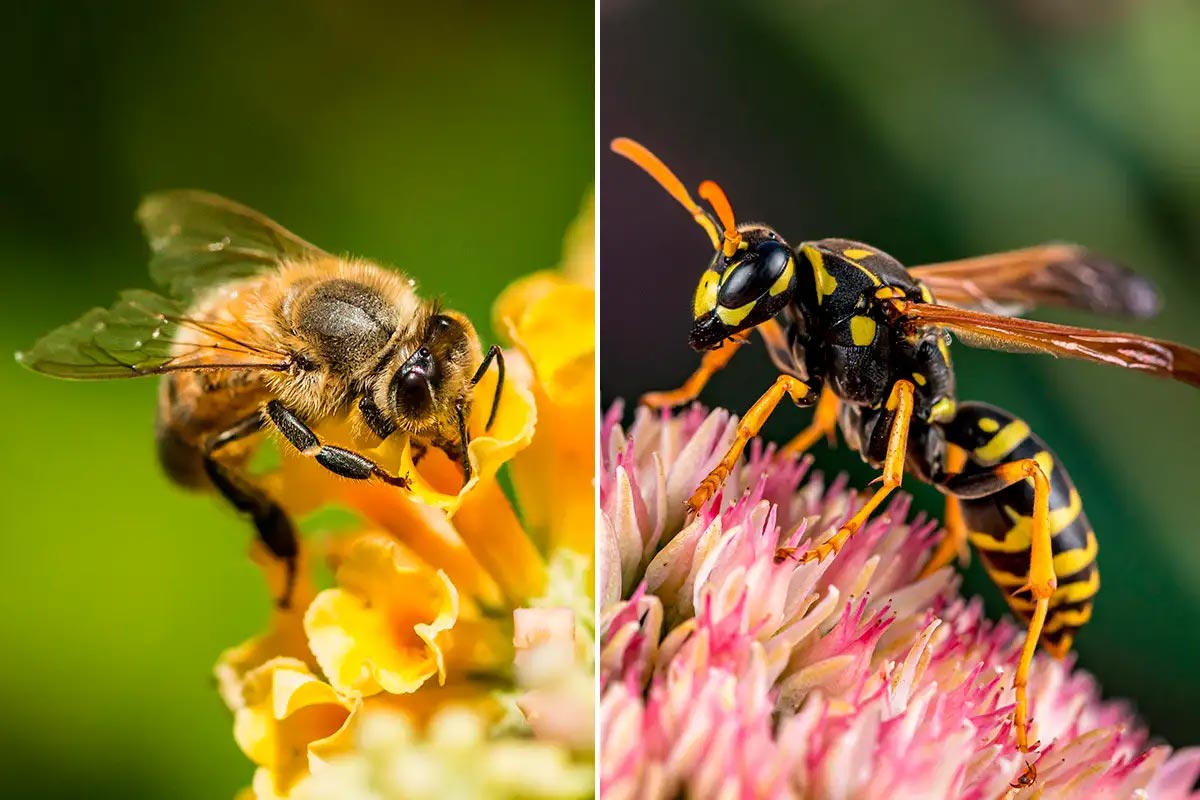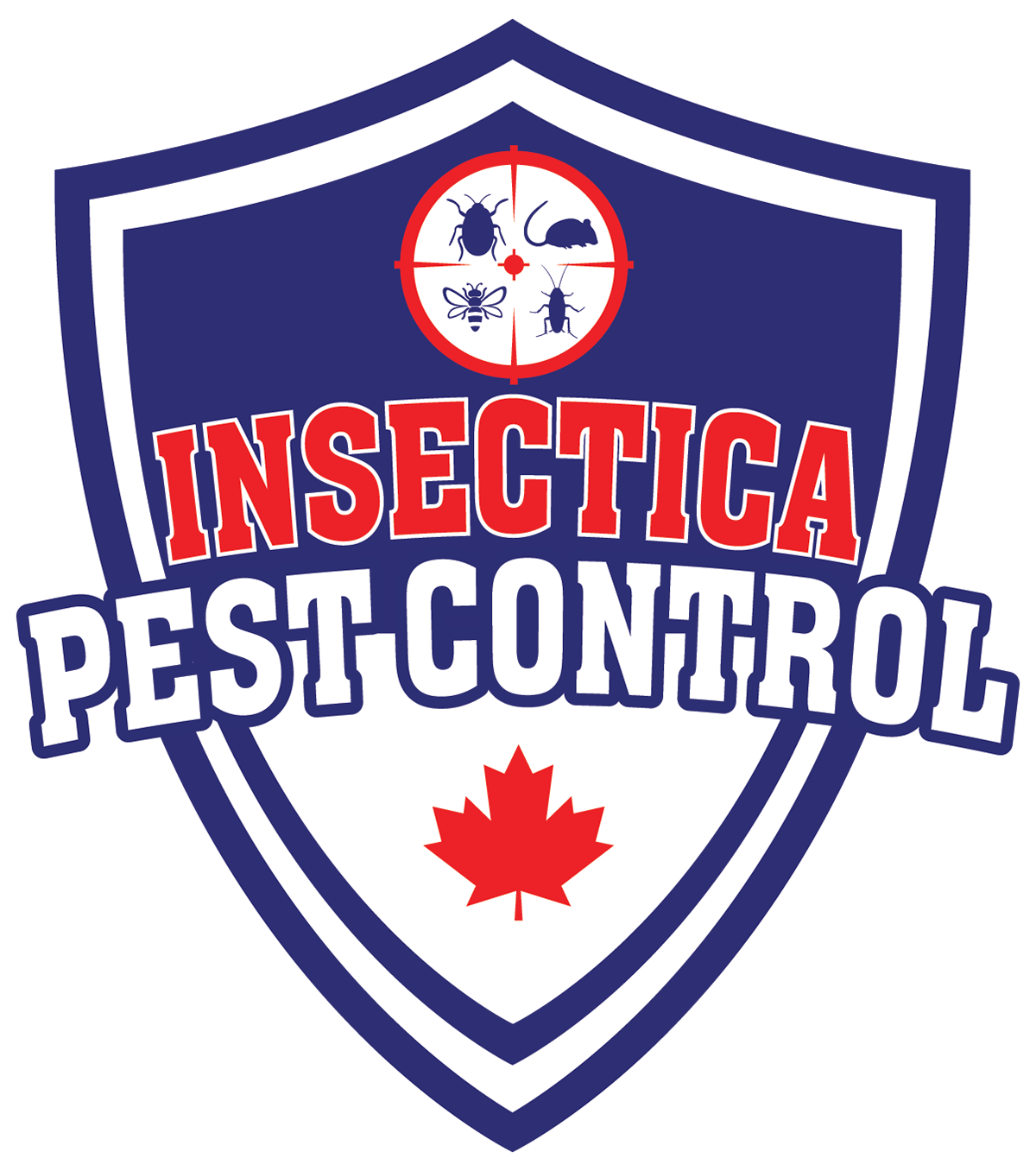Fall Wasp & Bee Activity in Toronto: Prevention Tips for a Sting-Free Season
Autumn in Toronto is a season of contrast: cozy sweaters, vibrant foliage, and… buzzing wings that refuse to quit.

While many pests slow down in the cold, wasps and bees actually ramp up their activity before winter sets in. Across the GTA, homeowners are noticing nests tucked under decks, eaves, and even inside walls. Companies like Pestend Pest Control, GreenLead Pest Control, Advantage Pest Control, and Maple Pest Control are fielding calls daily. At Insectica Pest Control, we know this story well. Our mission each fall isn’t just to remove pests, it’s to arm families with prevention strategies and deliver fast, reliable service so autumn stays sting-free. Why Fall Brings a Stingy Surprise
In Toronto’s temperate climate, fall is actually peak season for stinging insects. By late summer and early fall, wasp and hornet nests have swelled to full size. Studies and pest experts note that wasp populations peak in autumn, with mature colonies full of worker wasps and hungry hornets. With flowers and nectar running out, these insects turn up their food search. In practice, this means busy yellowjackets and hornets raiding garbage cans, fallen fruit and even open pop cans in search of sugar and protein. In other words, a backyard barbecue or patio dinner on a warm October day can easily attract an aggressive swarm of wasps looking for a last meal before winter.
Wasps become more irritable as autumn nests get crowded. By fall, a single nest may contain hundreds of wasps hunting for food. Unlike honeybees (which generally sting only once and mostly when provoked), wasps and hornets can sting repeatedly and will fiercely defend their nests. This seasonal frenzy explains why we handle so many calls about wasp nests under eaves or in wall voids each September. Experts even warn that DIY removal at this stage is especially risky – disturbing a full nest can provoke a dangerous swarm of dozens of wasps.
Honeybees and other beneficial bees also prepare for fall. They gather stores for winter and may look for late-season nectar. With fewer flowers around, even bees may become more defensive if their hive is disturbed. While honeybees typically only sting once and die afterwards, any bee sting can still hurt – especially for allergic family members or curious pets. Insectica technicians often gently check homes for hidden hives: a swarm of bees near a wall crevice or tree hollow can quickly become a hazard if ignored.
Tips to Keep Wasps and Bees Away
The good news is that many sting issues are preventable with simple home-care steps. Start by making your property unattractive to wasps and bees:
- Seal garbage and food sources. Wasps are famously drawn to sweets and trash. Keep lids on garbage cans and compost bins, and take out trash regularly. Never leave open soda cans, fruit bowls or uncovered snacks outside – even pet food on the porch can entice them.
- Remove fallen fruit and standing water. Rake up apples or berries that fall in your yard, and keep birdbaths and puddles drained. Hornets and yellowjackets love fermenting fruit and need water, so these simple chores can make your yard much less appealing.
- Maintain your yard and home. Trim dead branches, prune overgrown shrubs, and clear clogged gutters or debris near your house. Wasps often build nests in sheltered spots like roof eaves, tree cavities, or even inside attic spaces. Keeping these areas clean and sealed reduces easy nesting sites.
- Seal entry points. Inspect your siding, soffits and foundation for cracks or holes. Even a gap a few millimetres wide can invite paper wasps or hornets to start a nest. Use caulk or fine mesh to block any openings where insects might sneak inside.
- Use natural deterrents. Certain scents and colours discourage stingers. For example, avoid wearing perfume or bright floral clothing when gardening or dining outdoors. Plant herbs like mint or citronella near patios, and consider setting up a few hummingbird feeders or traps at a distance from living areas (but never near a beehive, which can attract hornets).
Following these bee and wasp prevention tips will keep wasps away in the first place. Covering outdoor trash, caps on soda bottles, and cleaning up food spills immediately are all little habits that pay off. If you notice the telltale buzz of a nest in late September, don’t wait: call a professional right away. Attempting to spray or knock down a paper wasp nest with a DIY spray is risky and often ineffective. Professionals have the proper protective gear and tools to safely remove nests with minimal fuss.
Professional Pest Inspection and Control
Stings can happen any time around a hidden nest. A thorough pest inspection of your Toronto home each fall is a smart move. Certified exterminators will locate nests (often hidden under eaves, decks, or even in wall voids) and identify the species. This is important: for example, some bees are protected pollinators and should be relocated, while aggressive hornets must be eliminated. Insectica’s technicians are trained to spot subtle signs of bees or wasps – a small hole in siding, a narrow mud tube in the grass (carpenter bees), or even a trail of wasp workers going in and out of a crack. Identifying the problem early means we can treat it before the colony explodes.
Even better, call us before you get stung. As a Ministry-approved pest control company, Insectica offers free inspections and estimates so you know exactly what’s happening around your home – and how to fix it – without surprises. We explain our findings clearly, showing you any nests or risk areas, and give you an upfront quote (no vague pricing and no pressure). In many cases, a pre-emptive treatment or targeted removal costs only a few hundred dollars, but saves you from dozens of painful stings and possible emergency medical bills later.
If you do get stung, stay calm. Remove any bee stinger promptly and treat the area with ice to reduce swelling. For multiple stings or signs of an allergic reaction (hives, trouble breathing), call 911. Meanwhile, call Insectica Pest Control and we’ll dispatch our same-day exterminator (often within 24 hours) to handle the nest safely. Our team serves all of Toronto and the GTA – from Scarborough and North York to Etobicoke, Markham, Richmond Hill, and beyond – so help is just around the corner when you need it. Here’s why homeowners trust us every fall:
- Free inspections & upfront quotes
- 24/7 emergency service
- Licensed, insured technicians
- Child & pet safe treatments
- 3-month warranty
- Loyalty savings
- Full service reports
- Residential & commercial experts
- Affordable, transparent pricing
Many families switch to Insectica after trying others because we make pest control simple, safe, and stress-free.
Enjoy a Safe, Sting-Free Fall
Don’t let wasps or bees ruin your autumn. By following the prevention tips above (seal trash, remove rotting fruit, cover food, etc.) and calling Insectica at the first sign of trouble, you can keep your home or business comfortable and safe. Remember, pest control in Toronto is not just about reacting – it’s about proactive care. Insectica Pest Control serves Toronto and the entire GTA (Scarborough, Etobicoke, North York, Markham, Pickering, Ajax, Oshawa and more) with fast, affordable service. Stay educated, stay vigilant, and enjoy the season outdoors without the fear of stings.
